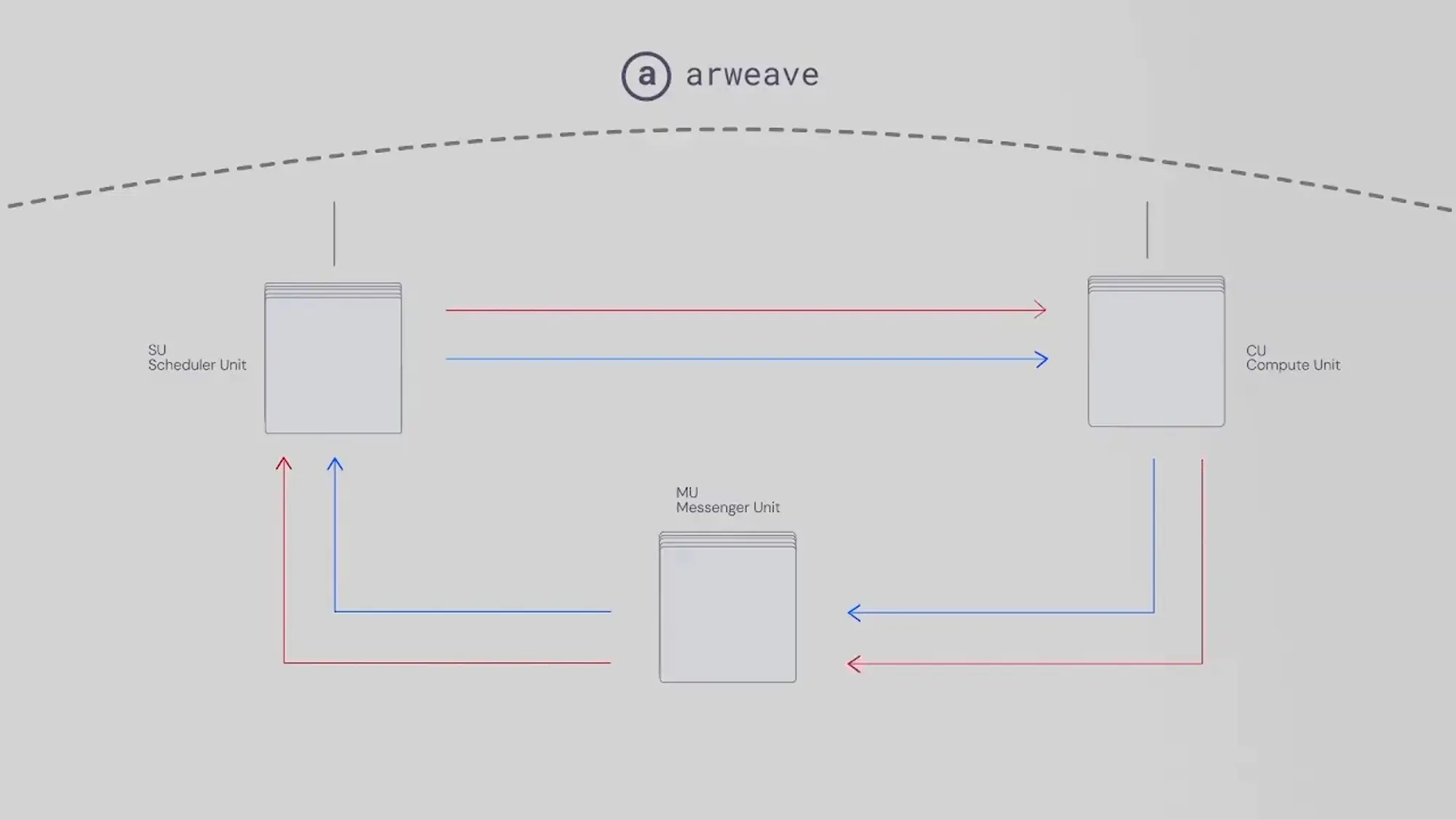Arweave AO: The Number One Player in the AI Era
At the beginning of February 2024, OpenAI released its first text-to-video large model, Sora, opening a new chapter in the development of artificial intelligence. On February 13, Sam, the founder of the renowned blockchain storage project Arweave, announced on Twitter that Arweave officially launched the ultra-parallel computer AO*, which supports running AI large models in smart contracts on the blockchain. This news quickly sparked enthusiastic discussions among those in the AI and blockchain sectors.
https://twitter.com/samecwilliams/status/1757161860028150159

Basic Introduction
What is Arweave

Arweave is a new type of blockchain storage network designed to solve the problems of permanent data storage and access. Arweave features a method called "permanent storage," which ensures that information is never lost by storing data on the blockchain. Arweave's cryptoeconomic model is designed to incentivize users to store and transmit data, ensuring the security and reliability of the network. This allows users to securely store important data such as documents, images, videos, etc., and access this data at any time without worrying about data loss.
In particular, Arweave has shown its unique advantages in the NFT field. NFTs typically require off-chain data storage, and if that data is lost or altered, the NFT loses its meaning. Arweave provides a solution that allows NFT-related data to be permanently stored, thereby ensuring the long-term value and significance of NFTs. Platforms like Opensea and Mintbase have already formed strategic partnerships with Arweave, and the NFT project Metaplex on the Solana chain also uses Arweave as the default tool for metadata storage.
Arweave is also committed to permanently preserving human knowledge and history, being hailed as the "eternal Library of Alexandria on the blockchain."
What is AO

AO is a distributed, decentralized, Actor-oriented computing system based on Arweave.
An Actor is the fundamental unit of a concurrent computing model in computer science. Actor-oriented refers to methods based on the Actor model, where each Actor can modify its allocated private state, but can only indirectly modify the state of other Actors by sending messages. This is suitable for building high-concurrency, distributed, and fault-tolerant systems, which is why the project is named AO.
AO consists of three units:

- Communication Unit (Messenger Unit): Responsible for message communication, delivering messages to the computing unit and coordinating to compute output results;
- Scheduling Unit (Scheduler Unit): Responsible for scheduling and message ordering, and uploading messages to Arweave;
- Computing Unit (Compute Unit): Responsible for processing computations and uploading results to Arweave.
Through the orchestration of the blockchain, each unit can act as a horizontally scalable subnet, executing a large number of transactions to achieve high-performance computing, theoretically providing nearly infinite computational power.
The core goal of AO is to achieve trustless and collaborative computing services without any actual scale limitations, providing applications with a new paradigm that combines blockchain. Compared to other high-performance blockchains like Solana, Aptos, and Sui, AO can support the storage of large amounts of data, such as AI models. Additionally, unlike Ethereum, which can only use a single shared memory space, AO allows any number of parallel processes to operate simultaneously within the computing unit and collaborate with other units through open messaging, without relying on centralized memory space.

What is AOS
AOS is a decentralized operating system built on AO by Arweave, functioning similarly to smart contracts, but the contract development language is Lua.
Lua is a simple, lightweight, and extensible scripting language, which is quite different from the commonly used smart contract languages like Solidity, Rust, and Move.
AOS allows developers to launch command-line processes and start issuing commands, providing a development experience similar to creating a new server instance on Alibaba Cloud and connecting to it via SSH, except this command-line process has the properties of a smart contract. This means these commands can achieve seamless user interaction across networks and have decentralized and trustless computing as key advantages.
Advantages of AO

The essence of AO is a decentralized cloud service based on the Storage-based Consensus Paradigm (SCP). There are three progressive relationships: "cloud service," "decentralized cloud service," and "SCP-based decentralized cloud service."
Cloud services are already familiar to everyone, and their importance need not be elaborated upon, as they have become a crucial infrastructure in the era of big data, but are almost entirely built and controlled by centralized giants, such as Amazon Web Services (AWS), Google Cloud Platform (GCP), Microsoft Azure abroad, and Alibaba Cloud, Tencent Cloud, Huawei Cloud domestically.
Decentralized cloud services refer to the use of blockchain economic incentives to achieve the sharing and exchange of cloud resources in a decentralized network. Users can earn digital currency or tokens by providing their processing power, storage space, or bandwidth to the network. They can then use these digital currencies or tokens to access services.
Decentralized cloud services rely on market forces to determine the value and allocation of computing power, storage space, and bandwidth. They achieve more efficient and direct resource allocation, and this economic structure encourages users to participate in the network and compete fairly, strengthening cloud infrastructure while breaking the control of giants. Since all underlying processing power, storage space, and bandwidth are provided by users, once the economic structure of a decentralized cloud service network is no longer applicable, users can choose to exit the network or join other decentralized cloud service networks, limiting the space for service providers in decentralized cloud service networks to "do harm."
Notable projects in the decentralized cloud service space include Dfinity, Ankr, Akash, etc. It is worth noting that Arweave itself can also be classified as part of the decentralized cloud service space, but it only provides a single cloud storage service.
One of the challenges of decentralized cloud services is that consensus mechanisms can be complex and difficult to implement, as they require nodes in the network to reach a consensus on data storage and retrieval. SCP is one effective way to address this challenge. SCP is a storage-based consensus paradigm, and its core idea is that as long as the storage is immutable, the transactions on it are traceable, then regardless of where the application is computed, the same result will be obtained.
AO uploads all states before and after computation, as well as inputs and outputs, to Arweave, allowing any third party to download all the data, run the execution environment (such as a virtual machine), and sequentially execute inputs to obtain a final consistent result. This achieves permissionless verifiability and reaches trustless consensus.
This means AO can achieve distributed verifiable computation, which is the greatest advantage of AO compared to other decentralized cloud services.
The Significance of AO for AI

The evolution of AI requires the joint promotion of three key elements: algorithms, computing power, and data. For some emerging AI enterprises, in order to reduce costs and gain more computing power, they have no choice but to collaborate with cloud service giants, as not all companies have the capability to build their own computing power, and developing AI applications will also increase the demand for cloud services. Meanwhile, cloud service giants are also developing their own AI systems, and it is now evident that centralized cloud service providers have almost all developed their own generative large models.
In this cooperative yet competitive relationship, cloud service giants, through their monopoly on computing power and dominance in cloud services, place emerging AI enterprises at a significant disadvantage. This competition, which favors financial strength over innovation, ultimately harms the interests of users.
Decentralized cloud services can balance this unfair competitive relationship and attract users to participate in the network by contributing computing power and data. It is believed that in the future, during the AI era, they will become new players.
Arweave's launch of AO marks a shift from the vertical decentralized storage track to the broader decentralized cloud service track. Its permanent on-chain storage is no longer just for storing user data but serves as a permanent host for cloud computing, focusing on large-scale verifiable computing with unlimited scalability, further enhancing its imaginative potential, aiming to become the number one player in the AI era.









